Calabash Fruit
Calabash Tree
Family: Bignoniaceae; Genus: Crescentia L.; Species: Crescentia cujete
A decoction made from the Calabash fruit was taken orally to treat diarrhea, stomachache, colds, bronchitis, cough, asthma, and urethritis. The leaves are used to treat hypertension. Research indicates there is a degree of toxicity and caution is advised.
The best use was as a bowl or container made from the dried fruit. It was noted for its insulating properties so that hot food placed in the bowl would remain hot for a long time.
The Calabash fruit was known as a Calabaza in Spanish and as a Lek in Maya. Several oral history narrators mentioned the Lek and we were shown an example by Filiberto Teck in San Victor. The other example was viewed at the Old Belize Cultural Center.
Source: Wikipedia and oral history project
Click on the images below to view a larger image
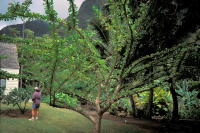 Â Â |
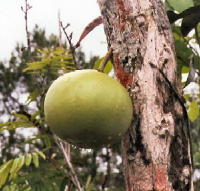 |
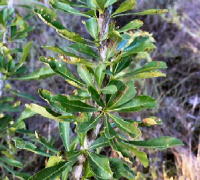 |
| Calabash Tree | Calabash Tree Fruit | Calabash Tree Leaves |
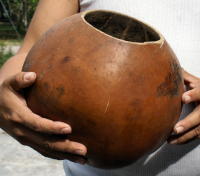 |
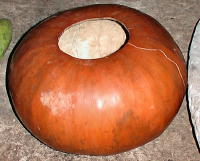 |
| Lek belonging to Teck Family | Lek in Old Belize |
Calabash Vine
Family: Cucurbitaceae; Genus: Lagenaria; Species: Larenaria siceraria
In Central America, the seeds of the Calabash vine fruit are toasted and ground with other ingredients (including rice, cinnamon, and allspice) to make the drink horchata. With excellent insulation properties like the Calabash Tree fruit, the dried fruit was frequently used as a water bottle.
The water bottle in the center is owned by Juan Perez of San Narciso. It had belonged to his father. The other water bottle was seen at the Old Belize Cultural Center.
Source: Wikipedia and oral history project
Click on the images below to view a larger image
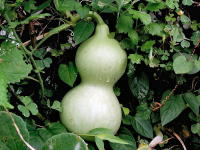 |
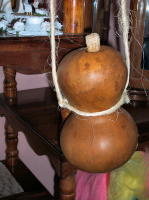 |
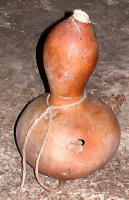 |
| Calabash Fruit | Lek Water Bottle | Lek Water Bottle |